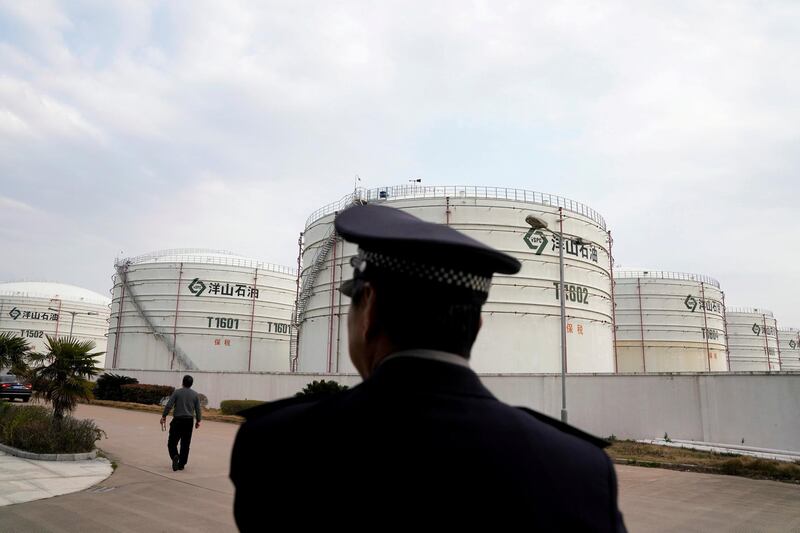China's threat to impose tariffs on US crude oil, certain refined products and coal is possibly the only sign of clear thinking in the increasingly muddled escalating trade dispute with the administration of President Donald Trump.
The tariffs on energy imports were mooted by the Chinese on June 15 as part of their response to the US announcement of tariffs on $50 billion worth of imports.
To be clear, the tariffs on crude oil and products and coal are still in the realm of the possible, and it will likely take a further deterioration in the relationship between the world's two largest economies to turn them into a reality.
It was also curious that the list of potential targets for customs included natural gas in its gaseous form, but not as liquefied natural gas (LNG). China imports zero gaseous natural gas from the United States, but is major buyer of its LNG.
The Chinese threat to impose tariffs on energy imports makes sense from two perspectives.
The first is that in economic terms it's generally best to put tariffs on goods with high elasticity, in other words goods you can substitute relatively easily from other suppliers.
The second is that if the aim of your tariffs is to inflict sufficient pain on the other country, it's best to target them where they can do the most damage to the economy, or the politicians promoting the trade war.
Looking at the first point, it's clear that China would be able to source crude oil, refined products and coal from other countries, even if it had to pay slightly more.
The Chinese have become a major buyer of US crude, importing about 319,000 barrels per day (bpd) in the first five months of the year, according to vessel-tracking and port data compiled by Thomson Reuters Oil Research and Forecasts.
This makes China the biggest net buyer of US crude (Canada imports more but also exports to the US), and therefore an important customer for the booming shale industry.
With US crude exports running at about 2 million bpd, China's purchases represent about 16 per cent of the total.
However, US crude supplies to China account for only about 3.5 per cent of the country's total daily imports.
What this is likely to mean is that China will find it easier to replace US crude imports than US producers will to get new customers.
It's not hard to imagine a scenario whereby China encourages Saudi Arabia and Russia, the world's top oil exporters and partners in the agreement to restrict output, to pump more crude.
China would then buy the additional Saudi and Russian output, using it to replace cargoes from the United States, and even from Iran, assuming the renewed US sanctions against the Islamic Republic force Beijing to curtail imports.
_______________
Read more:
Donald Trump threatens new tariffs on Chinese imports
China hits back in trade war but not leveraging Treasuries for now
_______________
Turning to coal, the majority of China's imports from the United States are coking coal, used in steel making.
Supply of this type of coal is more concentrated, with Australia dominating the seaborne market.
But absent a weather-related disruption in Australia, it's likely China could buy all it needs without tapping US supplies, although this may result in a shuffling among buyers. For example, Japan may buy more from the United States and less from Australia.
Looking at natural gas, and while LNG remains off the customs list for the time being, the Chinese could also probably replace what they buy from the United States from other countries if needed.
In the first five months of the year, the US supplied about 8.2 per cent of China's LNG imports, according to vessel-tracking data.
However, China bought about 22 per cent of all US LNG exports, meaning that China is more important to US LNG producers than they are to the Chinese.
By putting energy imports on the agenda for tariffs, even if LNG is excluded so far, the Chinese have put doubt in the minds of investors thinking of putting capital into a new US LNG project.
The second leg to China's threat is that any tariff on US energy imports will strike at the heart of President Trump's support base.
Coal miners count among Mr Trump's most vocal backers, but if China does stop buying US coking coal, it may force producers to accept lower prices from other buyers in order to move cargoes.
The oil and natural gas industries have also been viewed as largely in Mr Trump's corner and they are concentrated in states won by the former reality television star in his unexpected 2016 triumph.
Losing as big a buyer as China may force producers to accept lower prices or even reduce output.
Energy is also one of the few areas where the Chinese have genuine scope to increase purchases from the United States, thereby making it key to any efforts to lower the trade surplus China has with the United States.
Flagging energy imports as a possible target in the current trade skirmish comes across as a sign that Beijing is entirely serious about engaging in a tit-for-tat escalation with Mr Trump.
The Chinese have probably calculated that they can take the pain from a trade conflict longer than Mr Trump can, or at least longer than the US economy, companies and workers will be prepared to tolerate.
Reuters






